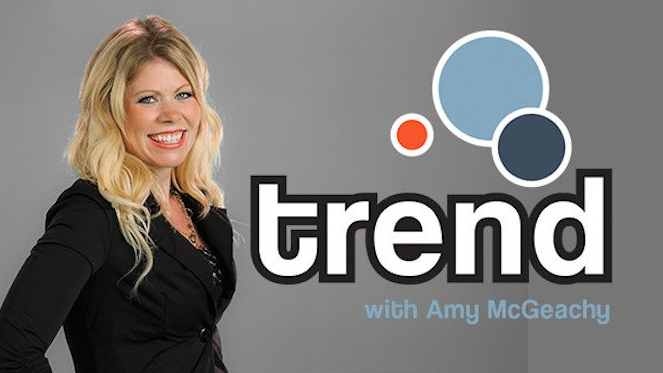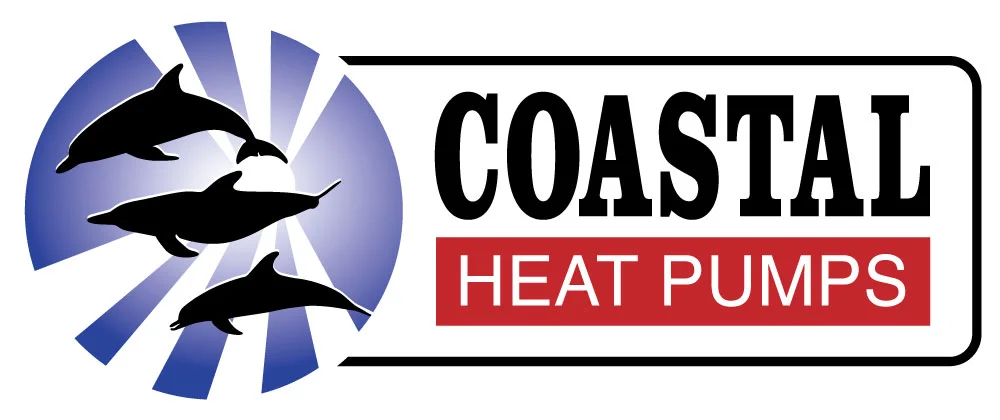
Coastal Heat Pumps featured on Trend TV
Don Gulevich, president of Coastal Heat Pumps, joins Amy McGeachy on her TV Show Trends to discuss the benefits of changing to a heat pump.
Watch and listen in as Amy interviews Don and discovers why switch from old heating and cooling technology, like baseboard heating or an oil fueled furnace, can save you thousands of dollars while creating a healthier more balanced environment in your home.
Transcript of Amy McGeachy Interview with Don Gulevich
Amy McGeachy:
Today’s going to be an educational field check not just for you guys but for me as well. I know absolutely nothing about heat pumps. Well so because of that we’re going to go talk to coastal heat pumps and learn more. Let’s go.
Wow what a great setting any time I get to leave for the pool in the sun, I am excited. How are you doing today.
Don Gulevich:
I’m doing great thanks. Excellent.
Amy McGeachy:
So we’re here today to find out about heat pumps because a lot of people including myself don’t necessarily know what a heat pump is.
Don Gulevich:
Right. OK. Well basically what a heat pump is in a real easy way to explain it is no different than your refrigerator in your home.
You put your milk in your eggs inside your refrigerator and if you put your hand on the back to the refrigerator it’s always warm on the inside warm on the outside refrigerators take in the heat from the inside and putting it outside. A heat pump is basically the same thing in the summertime it will take the heat out of your home, we put it to the outside. In the wintertime we reverse the flow of the refrigerant so we take the heat from the outside and we put it into the inside.
Amy McGeachy:
So what sort of applications would you use to heat pump.
Don Gulevich:
So, there’s a lot of different applications and you know they can go from a basic home where you having an electric heat with no with no ductwork in just baseboard radiant radiance. We can we can convert that home with the heat pump or a home with oil heat, we could convert that to a heat pump. The swimming pool, swimming pool is heated with a heat pump.
Amy McGeachy:
Wow.
Don Gulevich:
This home when it was purchased, it had
Amy McGeachy:
Its warm.
Don Gulevich:
I believe this was at 86 degrees right now, when this home was first purchased it had a propane boiler on it and the propane tank was absolutely monstrous and it would cost just a fortune to heat this pool, converting it to a heat pump. The cost to operate this is hardly anything.
Amy McGeachy:
Before we go swimming and test the pool why don’t we go inside and see some other application.
Don Gulevich:
Absolutely let’s do that.
Amy McGeachy:
The First I noticed in the house is it’s a really hot day outside and it’s so nice and cool in here.
Don Gulevich:
Absolutely. And that’s the beauty of a heat pump is you have the heat in the winter and you have the cool in the summer and we are putting the heat into the swimming pool right now but we’re putting the cool into the house.
Amy McGeachy:
So, because I’m always bringing back the aesthetics. Do you have to have a huge unit like a radiator that sort of thing sitting on the floor or on the wall.
Don Gulevich:
Oh good question. Now, with this equipment we used this home is done with what we call the ductless heat pumps. Now with ductless heat pumps typically, I’ll show you right over here, we have one wall unit that mounts high up on the wall and it’ll serve one large area. Now some people look at the big wall unit and say I don’t like it I don’t like the aesthetics of it. I don’t want it on my wall and that was this homeowner said the same thing and what we do in that case we still achieve the same end result but we don’t use the high wall unit what we use is what we call an air handling unit that we mount either in the Crawlspace or in a closet or in an attic. But I’ll show you what the ductless unit looks like. Here’s a sample of one.
Amy McGeachy:
Okay.
Don Gulevich:
And this here unit here would mount high up on the wall like that.
Amy McGeachy:
And You have to have one of these in every room.
Don Gulevich:
Yes. Yes you would have one of these in every room now the thing is a unit like this. If you put one in every bedroom it’s a waste of capacity for the whole on the system because you have one of these units was way too much capacity for one bedroom.
Amy McGeachy:
Right.
Don Gulevich:
So if we use what we call the ducted ductless.
Amy McGeachy:
Right.
Don Gulevich:
We put the air handling units in this home is in the crawl space and we have one air handling unit and it’s doing two or three bedrooms.
Amy McGeachy:
So its not so bad.
Don Gulevich:
No and what that allows us to do is it allows us to zone the house so we could have the bedrooms at one temperature the main living room at another temperature say the dan at another temperature or in the case of a lot of people in Victoria have suits. So what they have is they don’t have electric baseboards and in the suits and typically a tenant isn’t really that concerned about their electricity bills. So you’ll see what they’ll have the temperature jack rado put wide high the window will be open so the cat can come and go and meanwhile the landlord’s got really high electricity bills. So what we’ll do is we’ll put one of these units in the suite that we that the tenant has got total control. The upstairs has got total control and it’s very economical.
Amy McGeachy:
And so it really is that much of a cost saver.
Don Gulevich:
Absolutely and if you compare it to electric baseboards for every dollar’s worth of electricity put into the electric base for heaters you get a dollar’s worth the heat, with this equipment you put in one dollar’s worth of electricity into it you at any from three dollars to four dollars and fifty cents worth the heat out of. A huge savings.
Amy McGeachy:
And you are not new to the business. How long have you been in the industry.
Don Gulevich:
Since 1900’s.
Amy McGeachy:
And You’ve probably seen a lot of change.
Don Gulevich:
Absolutely and one of the neatest changes is is the ductless equipment and when we hook it up to ducted it gives us the ability to zone the equipment and zone the house, So, Whereas typically in the past where we have one outdoor unit one indoor unit it’s still a heat pump. It’s still very efficient its still a good way to do your home. But it’s like having one light switch for your whole house.
Amy McGeachy:
Right.
Don Gulevich:
Whereas this gives you the ability to find too.
Amy McGeachy:
And this is something that you have to do with new construction or can you add it to a home really easily.
Don Gulevich:
Ohh, Absolutely you can do it either we do a lot of retrofits and we did one right retrofit in downtown and it was a heritage building and half the home was an office building. There was a three story heritage building half the main floor was office half the upstairs main area the second level was office and the other half of the building was residents. So we’re able to do this still maintain the integrity of the heritage site and bring them heating and cooling total comfort and save some ton of money.
Amy McGeachy:
See I didn’t know any of that. But I have to admit, My favorite part is still the swimming pool.
Don Gulevich:
Oh yes.
Amy McGeachy:
I think we need to go back of that.
Don Gulevich:
Let’s do it!

